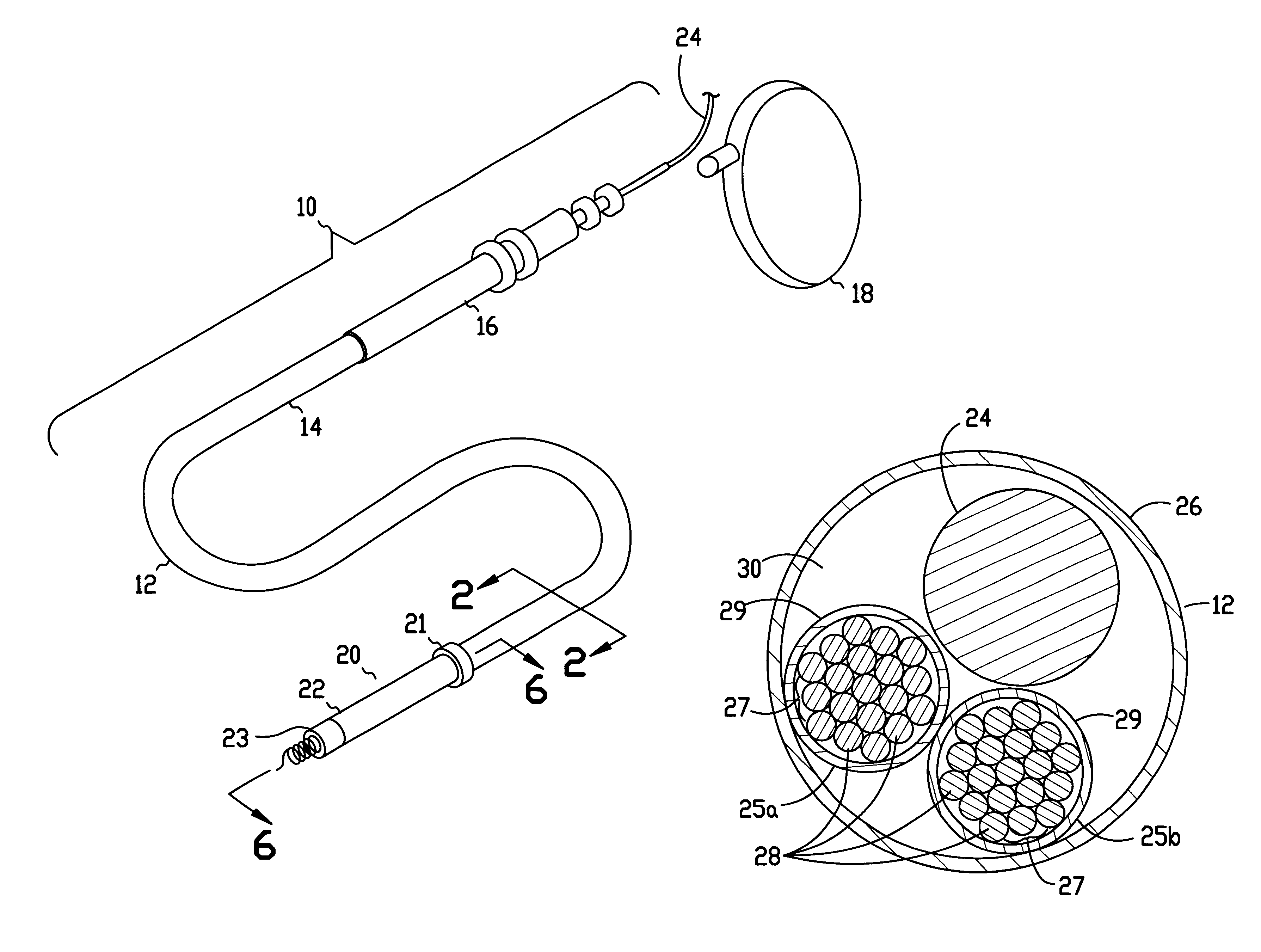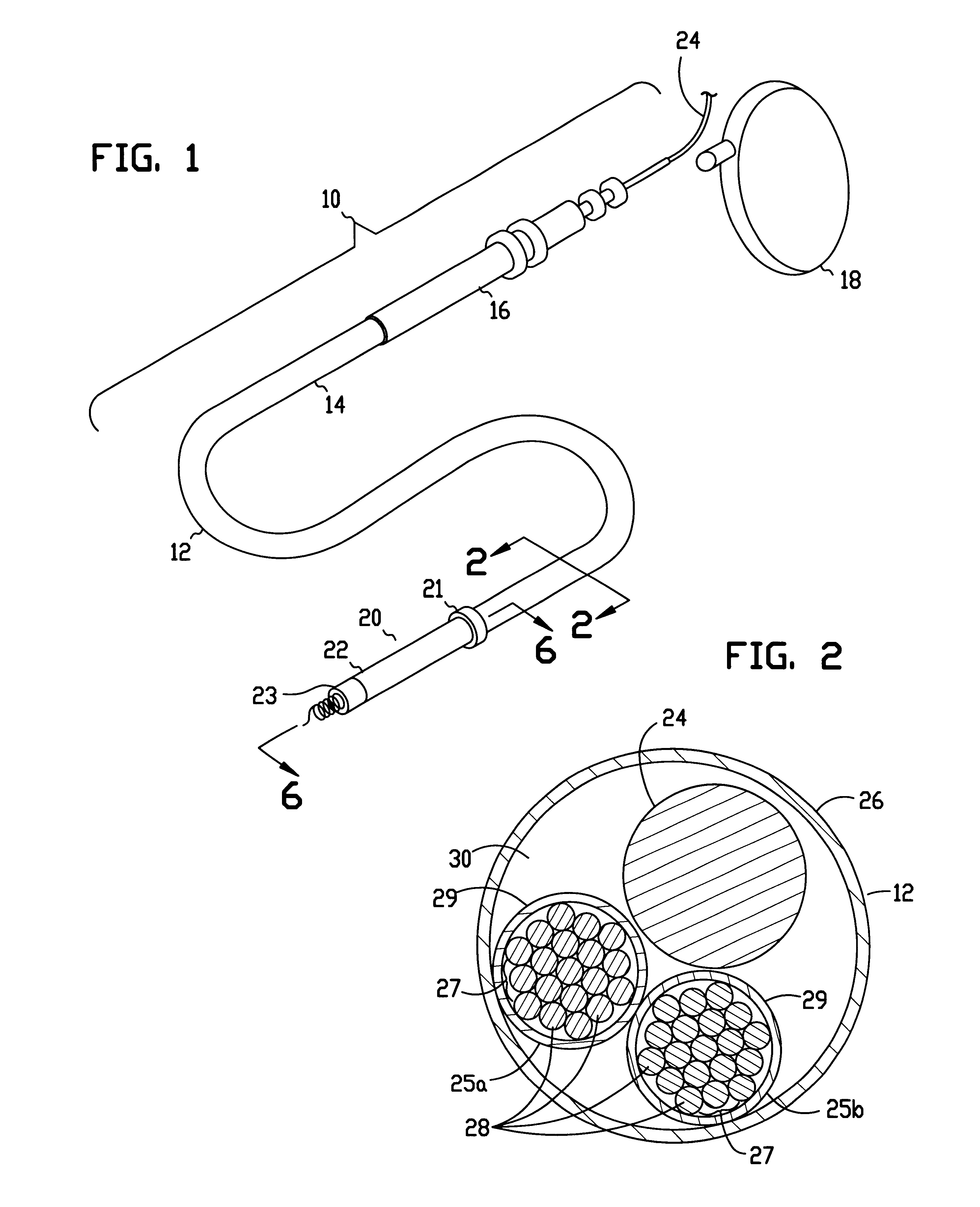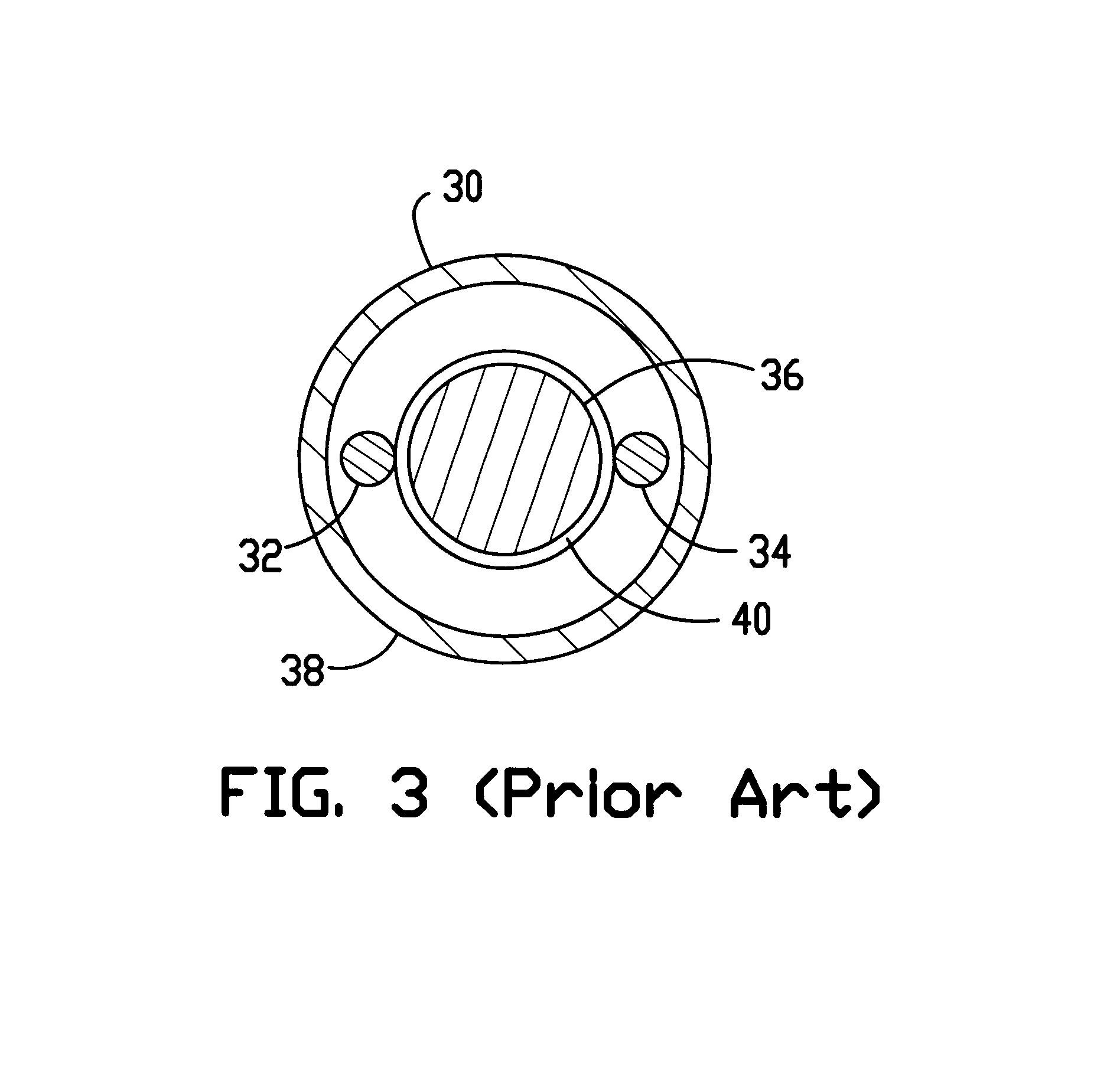Cardiac lead with minimized inside diameter of sleeve
a technology of cardiac lead and inside diameter, which is applied in the field of implantable cardiac stimulation leads, can solve the problems of reducing blood flow, affecting the normal flow of blood, and affecting the effect of electrophysiological therapy
- Summary
- Abstract
- Description
- Claims
- Application Information
AI Technical Summary
Problems solved by technology
Method used
Image
Examples
Embodiment Construction
In the drawings described below, reference numerals are generally repeated where identical elements appear in more than one figure. Turning now to the drawings, and in particular to FIGS. 1 and 2, there is shown an exemplary lead assembly 10 that is adapted for either endocardial or epicardial fixation to a human heart. FIG. 1 shows a pictorial view of the lead assembly and FIG. 2 shows a cross-sectional view of FIG. 1 taken at section 2--2. The lead assembly 10 includes a lead body 12 that has a proximal end 14 provided with a connector 16 for electrical connection to a cardiac stimulator 18. The cardiac stimulator 18 may be a pacemaker, a cardioverter / defibrillator, or a sensing instrument. The proximal end 14 of the lead body 12 may be coupled to the connector 16 by conventional means such as crimping, laser, or spot welding. The distal end 20 of the lead body 12 includes an annular electrode 21 and a tubular housing 22 disposed distal to the annular electrode 21 that has another...
PUM
 Login to View More
Login to View More Abstract
Description
Claims
Application Information
 Login to View More
Login to View More - R&D
- Intellectual Property
- Life Sciences
- Materials
- Tech Scout
- Unparalleled Data Quality
- Higher Quality Content
- 60% Fewer Hallucinations
Browse by: Latest US Patents, China's latest patents, Technical Efficacy Thesaurus, Application Domain, Technology Topic, Popular Technical Reports.
© 2025 PatSnap. All rights reserved.Legal|Privacy policy|Modern Slavery Act Transparency Statement|Sitemap|About US| Contact US: help@patsnap.com



